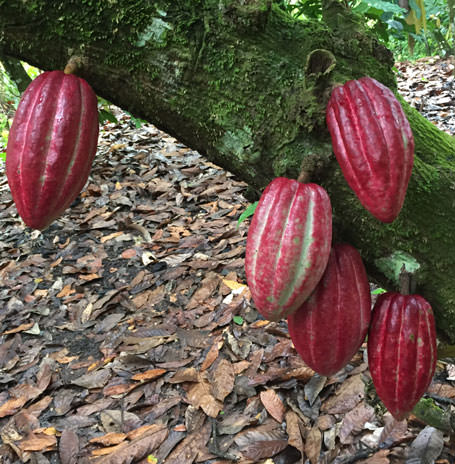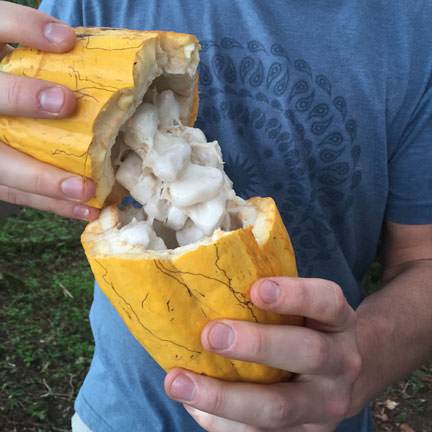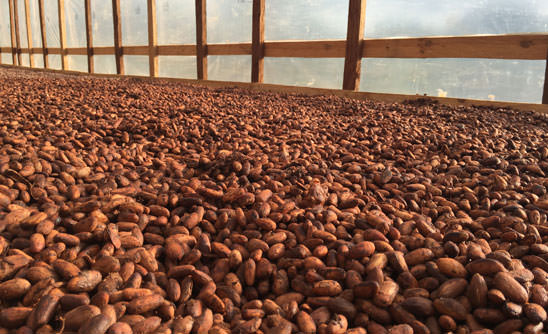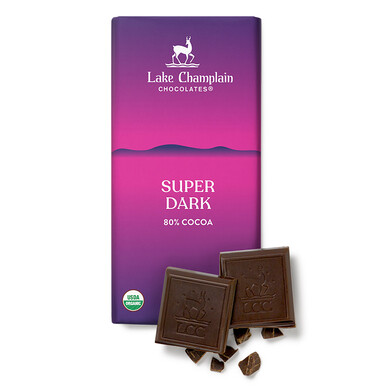
What is Cacao?
You say cocoa, I say cacao. But, what’s the difference? Both words are derived from the word Theobroma cacao, the taxonomic classification for the cacao tree. Throughout the world there are different schools of thought on how these terms should be used. Some say "cacao" applies to the farm/origin level (pods, seeds, trees), and "cocoa" is accurate once the bean is fermented and dried or roasted. Others insist it's only if it's been finished (into cocoa mass/liquor) or powdered (separated from the cocoa butter). To further confuse things, many use the terms “cacao” and “cocoa” interchangeably. Language distinctions, translation, and cross-over use of the words has made it so that there isn’t one clearly set distinction between the two.

Cocoa vs. Cacao - Our Definition
Here at Lake Champlain Chocolates, we use “cacao” to refer to the tree and the raw, unrefined bean, and use the term “cocoa” for the bean after it’s been roasted. After the bean has been roasted, it can be processed into many forms – nibs, liquor, cocoa powder, or butter.

How is cacao used?
Cacao beans can be sourced from a variety of countries throughout the world. From Guatemala and the Dominican Republic, to Tanzania, and Madagascar, each cocoa growing region, farm, and even harvest season has a direct impact on the cacao bean and its flavor profile. These beans are then made into craft chocolate.
Apart from being used to make chocolate, cacao nibs (the inside of the bean) can be included in chocolate confections to create a delightful crunchy texture. They provide a nut-like consistency, without introducing allergens. Our Chocolate Caramel Five Star bar® utilizes this unique ingredient. Cacao nibs are extremely versatile and have been used to make cacao vodka, cold brew coffee, and even Vermont craft beer. Looking for some delicious recipes using cacao? Try our simple, tasty homemade crème de cacao.
What does cocoa percentage mean?
You may have noticed that more and more chocolate packaging lists a percentage on the front. This number refers to the total cocoa content of the chocolate bar. To get a better understanding of the cocoa content you need to read the ingredient list.

For example, our 80% cocoa dark chocolate bar has a simple ingredient list: chocolate liquor, sugar, cocoa butter, and vanilla extract (all organic and fair trade certified). The composition of this bar would then be 80% cocoa (a combination of cocoa liquor/mass and cocoa butter) and 20% organic sugar and vanilla extract. As a general rule of thumb, the higher percentage of cocoa, the less sugar the bar will contain, and the darker the chocolate bar.

Why should I care about the cocoa content of a bar?
For bean-to-bar chocolate fanatics, who value the terroir of cacao from various regions of the world, cocoa content not only defines the composition of the bar but is an expression of the craftsmanship of the chocolate maker. When developing a new bar, craft chocolate makers adjust roast times and temperatures, grind times, and cocoa percentages to create what they believe is the best statement of the flavor profile for each distinct origin of cacao beans.
Other chocolate fanatics are concerned with cocoa content for what it means in terms of the health benefits of chocolate. Cacao is considered to be a superfood. Therefore, shoppers looking to consume chocolate for its health benefits want a chocolate bar with less sugar and more cocoa, and search for bars with higher percentages of cocoa or what is also known as extra dark chocolate.
Interested in learning more about cacao? Why not put your taste buds to the test and explore the flavor profiles of different cacao percentages and origin. Our helpful guide will walk you through the six steps to tasting chocolate. If you still have questions, our knowledgeable staff of fanatics love to talk about all things chocolate – give us a call or visit any one of our four Vermont retail stores.